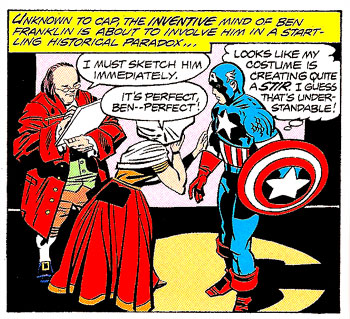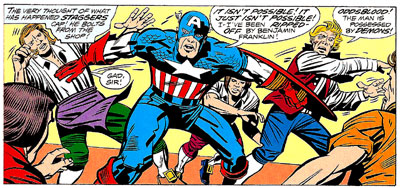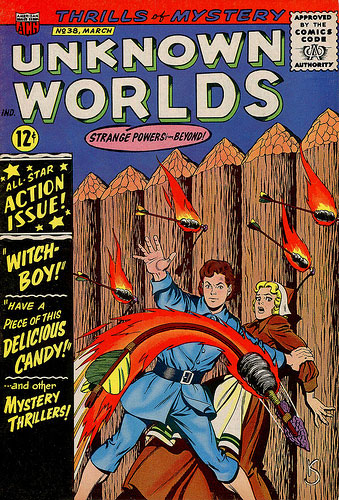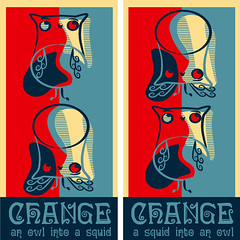Here’s a handsome coffee table book I’ve been wanting for a while: Manga Kamishibai: The Art of Japanese Paper Theater [amazon]. And you know what! I just ordered it, because for some reason Amazon has it for sale for $6.46, instead of $35. Go figure. I advise you to order your own copy before they come to their senses.
Let me quote the product description, by way of posing my question for the day:
Before giant robots, space ships, and masked super heroes filled the pages of Japanese comic books – known as manga – such characters were regularly seen on the streets of Japan in kamishibai stories. Manga Kamishibai: The Art of Japanese Paper Theater tells the history of this fascinating and nearly vanished Japanese art form that paved the way for modern-day comic books, and is the missing link in the development of modern manga.
During the height of kamishibai in the 1930s, storytellers would travel to villages and set up their butais (miniature wooden prosceniums), through which illustrated boards were shown. The storytellers acted as entertainers and reporters, narrating tales that ranged from action-packed westerns, period pieces, traditional folk tales, and melodramas, to nightly news reporting on World War II. More than just explaining the pictures, a good storyteller would act out the parts of each character with different voices and facial expressions. Through extensive research and interviews, author Eric P. Nash pieces together the remarkable history of this art and its creators. With rare images reproduced for the first time from Japanese archives, including full-length kamishibai stories, combined with expert writing, this book is an essential guide to the origins of manga.
I’m a comics guy, so this is very interesting to me. Let’s think about it theoretically – in a McCloudish sequential visual art-ish way. Suppose you want to tell a story (tell anything) in pictures, and you want to get reasonable distribution. First, you can bring the people to you. Go monumental. Build something that lots of people can come and see on a regular basis. Paint the ceiling of your church, or carve your images into the walls of a public building/structure. This has been done at many times and in many places. It is a time-honored method for getting lots of people to see your sequential visual art. Second, you can make lots of copies that you distribute widely. This modern method works great as well. Third, you sort of split the difference. You make some copies, but not too many; and you make them large, but still portable. And you make the circuit with them, ‘performing’ for relatively small, paying audiences. Comics as traveling theater. Well, obviously the Japanese went that route for a time. Who else has? It seems odd to me that there aren’t more examples of this kind of thing. It’s seems a natural sort of middle ground to hit upon when you don’t have enough cash for a cathedral and no one has invented cheap enough printing yet (yes, I know there was cheap printing by the 30’s. I’m sure you get what I’m saying.) There’s puppet theater. Why not more of this ‘comics’ theater thing? Who did this before or besides the Japanese (or after)?
Obviously it doesn’t go just for sequential visual art. Any old picture that you wanted to share around might pose you this distribution dilemma. But the theater formula seems particularly winning, potentially. It also seems like the sort of thing that you could do even if you didn’t have, say, paper. Fabric. Wood. Lots of cultures have had access to basic materials that might have served, and that wouldn’t have been prohibitively expensive for small-time operators. So are there more examples of ‘comic’ theater, in the sequential visual art sense?
I’m still waiting for my copy, obviously. I don’t know much about the Japanese case yet. Maybe some of these larger questions are addressed in the book.








